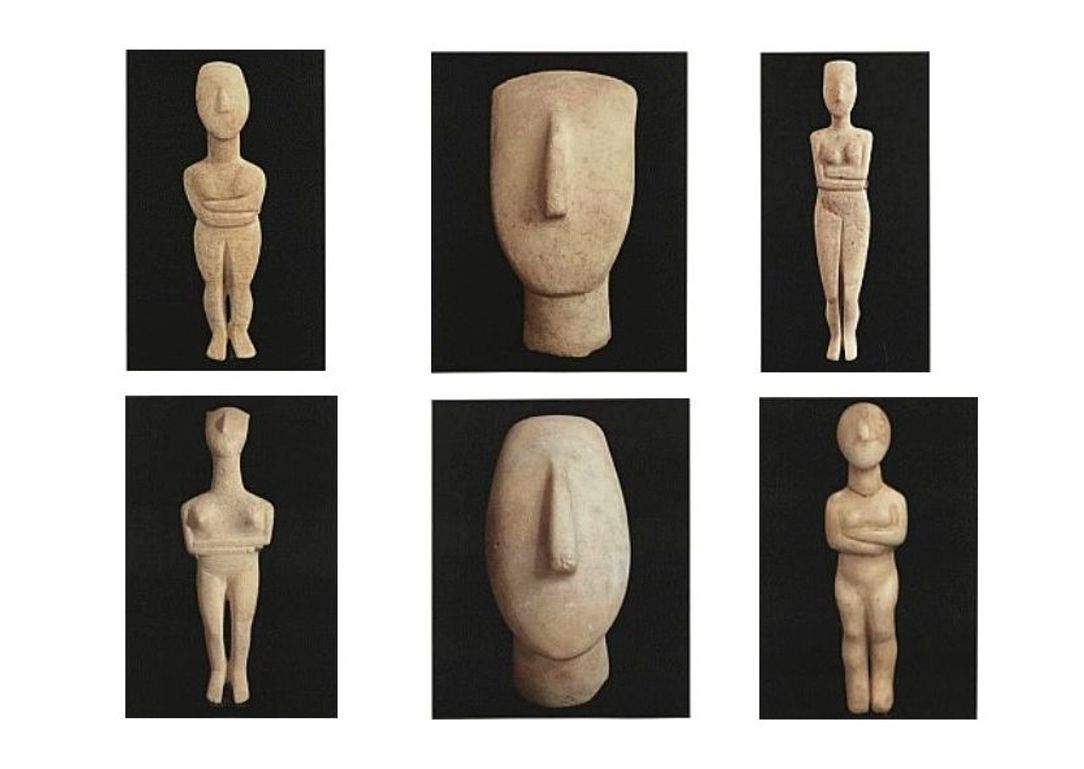The Metropolitan Museum of Art in New York City announced in recent hours a historic, 50-year partnership with the Greek government and the Museum of Cycladic Art in Athens, along with the Hellenic Cultural Institute, centering on the Cycladic Art Collection of Leonard N. Stern, a collector who owns one of the most important collections of Cycladic art in the world. The agreement, approved by the Greek parliament in September, will bring 161 Cycladic objects from the Leonard N. Stern to the Met for a twenty-five-year exhibition beginning in January 2024. For the first ten years the collection will remain on display in its entirety at the Met, after which, for the next fifteen years, selected works will travel periodically to Greece for display in Greek museums, while other loans of Cycladic art will come to the Met. Over the next twenty-five years the loan will be renewed. In addition, Stern has made a major donation to the Met to support the exhibition and study of Cycladic art.
The Leonard N. Stern Collection includes some 161 works made in the Cyclades primarily in the Early Bronze Age (3200 B.C. to 2000 B.C.). Almost all major types of Cycladic marble figurines are represented from the Late Neolithic to the end of the Early Bronze Age. The collection also features very rare specimens, and in addition the objects range in size from tiny figurines to a reclining woman over six feet long that ranks among the great works of Cycladic art. There are also a large number of marble vases including glasses, bowls, collared vases or “kandilas,” and cups and tables with feet. Other types of objects from different media include an earthenware pan, a pair of electro bracelets, and a bronze axe.
The collection, the museum says, will significantly enhance the Metropolitan’s ability to represent Cycladic art in the context of its encyclopedic collections. The New York museum’s collection of Greek and Roman art (more than thirty-three thousand works ranging from the Neolithic period to the time of the Roman emperor Constantine’s conversion to Christianity in 312 A.D. and beyond) includes art from many cultures and is among the most comprehensive in North America. More than 7,500 of the department’s most important works are displayed in an installation arranged along 26 galleries within the Met’s historic main building. The display in the main galleries is enhanced by numerous artworks on loan from institutions and private collections around the world.
The donation made by Leonard N. Stern includes the provision of an archive room in the Onassis Library for Hellenic and Roman Art in the Greek and Roman Department, and the provision of a workstation to facilitate archival curation and scholarly visits. Both the archives room and the station will be named after Leonard N. Stern in recognition of his generosity. An additional endowment fund will support programming around the Stern Collection, including scholarships for Greek scholars to study the collection.
“The Met’s mission,” says Director Max Hollein, “is to enable the enjoyment and study of art. Leonard Stern is a great friend of the museum and, of course, an unparalleled collector with a generous spirit. This agreement builds on decades of fruitful collaboration between the Greek government and the Met, and we are delighted to play a role in an arrangement that will excite and educate visitors and scholars now and for generations to come. We are deeply grateful to Leonard for this extraordinary collection and for devoting funds to the study of these outstanding works and related archival material, which will be made widely available. The Met extends special thanks to Greece for our strong partnership and for authorizing this historic loan, and we look forward to continuing our ongoing discussions about future exchanges of scholarship and expertise. We all benefit from the public display of art.”
“An exquisite and unknown collection of Cycladic antiquities formed by Leonard Stern, a prominent American collector and philanthropist, comes to light,” stresses Kassandra Marinopoulou, president of the Museum of Cycladic Art in Athens. It is undoubtedly a historic moment: for our country, for the Museum of Cycladic Art, and personally for me, as we are entering into this unprecedented partnership with the Hellenic Republic and the Metropolitan Museum of Art, contributing to the return of these Cycladic masterpieces and hopefully other antiquities in the future. Spreading the art of the Cyclades and ancient Greece internationally has been our main mission since the founding of the Museum. I am very proud to see our vision realized beyond all expectations. Even more so for the fact that these Cycladic masterpieces will be displayed among the Greek and Roman antiquities at the Met. I want to express my gratitude to all parties involved."
Leonard Stern, on the other hand, commented, “I fell in love with Cycladic art when I was only 14 years old while visiting the Metropolitan Museum of Art. Thus began my lifelong passion for collecting and preserving what was then a little-known area of antiquities. With the growing realization that my collection in its scope and size had become unique outside of Greece, I decided to work with Greece, the Museum of Cycladic Art and the Met so that visitors in Greece and New York could appreciate the magnificent beauty and mystical simplicity of these incredible objects carved some 4,500 years ago.”
 |
| Historic agreement between the Metropolitan Museum of New York and Greece for a major collection of Cycladic art |
Warning: the translation into English of the original Italian article was created using automatic tools. We undertake to review all articles, but we do not guarantee the total absence of inaccuracies in the translation due to the program. You can find the original by clicking on the ITA button. If you find any mistake,please contact us.